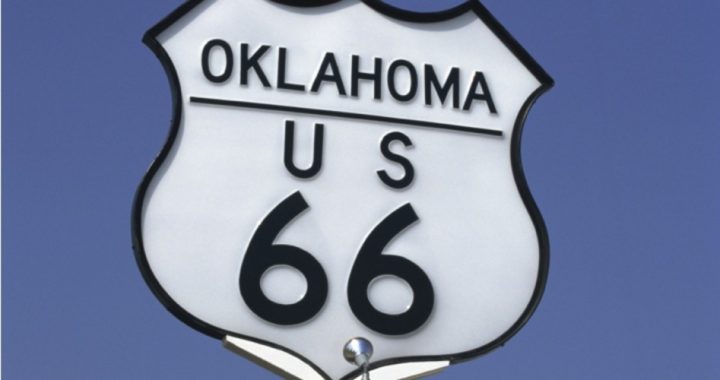
After defeating a resolution last year asking Congress to call a “convention of the states,” the Oklahoma House of Representatives reversed course this week, and passed the measure, 57-33, with 11 abstentions. Although it passed the Senate last year, Senate Joint Resolution 4 will return to the Senate for consideration of House amendments. Senators could reject the House amendments, forcing the measure into a conference committee to iron out the differences, or the Senate could accept the House amendments, which would cause the proposal to be sent onto Congress. It does not require the approval of Governor Mary Fallin.
Fifteen legislators switched their votes after intense lobbying, which included personal visits to most Republican House members by former Senator Tom Coburn, a huge supporter of the idea.
Under Article Five of the U.S. Constitution, amendments to the Constitution can be proposed to the states for ratification in two ways. All 27 amendments so far have come through the first method, with a two-thirds vote of each house of Congress. Proponents of the Convention of the States, or Constitutional Convention, method are attempting to make use of the second method, which has never been used in our nation’s history. Under this second method, if two-thirds of the states (or 34 of 50) request a national convention to consider amendments, Congress is then required to call such a convention.
In the Oklahoma House, no Democrats spoke during the debate. The House, like the Oklahoma State Senate, is mostly Republican, and the debate all involved Republicans, taking each side of the issue.
House author Gary Banz (R-Midwest City, 53 percent last session on the Conservative Index of the Oklahoma Constitution newspaper), argued for its passage in the midst of lengthy debate. “This is an opportunity to ensure for the next generation a safe and secure republic.”
But, Representative Sally Kern (R-Oklahoma City, 93 percent last session on the Conservative Index) called the proposal a mistake. After citing George Washington and James Madison as examples of leaders from the 1787 Constitutional Convention, she lamented that, “Those kinds of people would not be elected to a constitutional convention today.”
Oklahoma has been targeted by the Balanced Budget Amendment Task Force to obtain the requisite number of states to force a modern constitutional convention. As of now, 27 states have petitioned Congress to call a convention to consider a federal balanced budget, while less than 10 have done so for term limits on members of Congress.
Getting control of the growing national debt was a major argument of those pushing for a constitutional convention. Representative Jason Nelson, a Republican from Oklahoma City with a 70 percent Conservative Index score, called the growing national debt a “national security” concern. “We will go insolvent, no doubt about it,” Nelson warned.
In fact, pro-constitutional convention legislators made the case that Oklahoma, like every other state except for Vermont, have a requirement for a balanced budget, but no such requirement exists for the federal government.
But this actually makes the case for those who oppose the proposed constitutional convention to enact an amendment to the Constitution, requiring a balanced federal budget. A balanced budget has been part of Oklahoma’s Constitution since the early 1940s, but state legislators routinely circumvent the requirement by issuing bonds — to build roads, to make Capitol repairs, and the like. They protest that there is a “revenue stream” to pay off the bonds, so it is not really debt.
That is like saying if a person has a job, and he is making his house payments each month, he is not really in debt. Only legislators and congressmen talk such nonsense.
Even if the proposed constitutional convention met, passed a balanced budget amendment to the Constitution, and went home doing nothing else, and that proposed amendment was ratified by the states, who is to say that it would be obeyed any better than the rest of the U.S. Constitution? After all, we have a Constitution right now that does not authorize most of the stuff Congress does. Presidents regularly ignore constitutional restrictions, even boasting they have a pen and a phone. The Supreme Court routinely finds stuff in the Constitution we all know is not there, and they know is not there, and we all know they know we know it is not there. But they continue to do it, with a straight face. Why pass yet another amendment for them to ignore?
In 1791, the First Amendment was added to the Constitution. It stated very clearly that Congress was to “make no law” abridging either freedom of speech or the press. Seven years later, Congress passed a law — the Sedition Act — which abridged freedom of speech and freedom of the press. The Sedition Act was sent to the dustbin of history following the presidential and congressional elections of 1800. If the people want a government limited by the Constitution, they must use the ballot box to replace the personnel of government — fire them — who are disobeying the Constitution.
The real fear, though, is that the Constitutional Convention will not restrict itself to a balanced budget amendment, but enact a series of radical proposals. The last Constitutional Convention in 1787 just threw out our first constitution, the Articles of Confederation. That is ridiculous, you say, because any amendment emanating from such a convention would have to be ratified by three-fourths of the states.
Actually, it is not so absurd. The Articles of Confederation required unanimous consent of all the states for an amendment, but the framers of the Constitution set the ratification method at only nine of the 13 states. Who is to say a constitutional convention of today would not change the ratification method, as they did in 1787?
Who knows what would happen at a modern convention? It is simply too risky a proposition to call another such convention, especially in the present toxic political climate. Madison himself addressed the issue of whether such a convention should be called under Article V of the Constitution: “I should tremble for the result of a Second [convention].”
In The Bill of Rights: The Fight to Secure America’s Liberties, Carol Berkin, a professor of history at Baruch College, wrote, to men like George Washington and James Madison, the effort for a second constitutional convention was “playing with the fate” of the republic. According to Berkin, Washington and Madison believed those who wanted another constitutional convention “appeared blind to the fact that organizing and conducting such a convention would be fraught with questions and problems.” Among those questions were, “How would the delegates be selected? Would each state hold yet another convention to choose its delegates to this national convention?”
And, perhaps most ominously for our day: “Would its agenda be confined to the amendments proposed” by the states?
Calling a national constitutional convention at this time in our nation’s history is like throwing dice at the local casino. You could win, or you could lose, but we’re not talking about a few dollars lost gambling — we are talking about our Constitution. Hopefully the Oklahoma Senate and legislators in other states will not follow the gamble engaged in by the members of the Oklahoma House of Representatives.
Steve Byas is a professor of history at Hillsdale Free Will Baptist College (soon to be Randall University) in Moore, Oklahoma. His book, History’s Greatest Libels, is a challenge to the falsehoods of history often told about such persons as George Washington, Thomas Jefferson, Joseph McCarthy, and Christopher Columbus.



